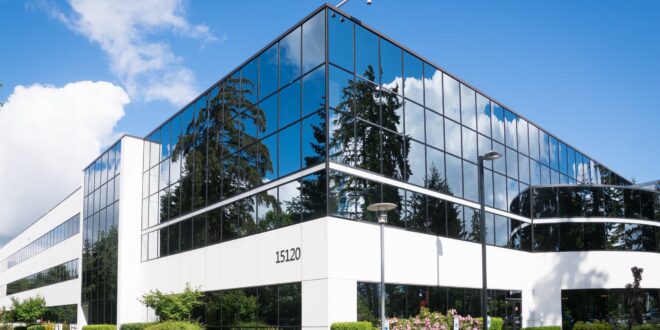Owning a commercial building can be a lucrative investment, but only if you can keep it leased. An empty commercial property can be a significant drain on your finances, so it’s essential to take proactive steps to attract and retain tenants.
Whether you’re a seasoned commercial property owner or a newbie in the real estate game, these five tips can help you maintain a consistently occupied building.
1. Understand Your Target Market
The first step in keeping your commercial building leased is to understand your target market. Not all commercial properties are suitable for the same type of tenants. Knowing the specific needs and preferences of potential tenants will help you tailor your marketing efforts and property features to attract the right businesses.
Begin by researching the local business landscape. What types of companies are thriving in your area? What industries are on the rise? This information will guide you in understanding the demand for specific types of commercial spaces.
Next, assess your building’s strengths and weaknesses. Does it offer ample parking, excellent visibility, or proximity to public transportation? These features can be major selling points for businesses in various sectors. For instance, retail businesses may value high foot traffic, while office tenants may prioritize a convenient location for employees.
Knowing your target market also helps in setting competitive rental rates. You don’t want to price your property out of the market, but you also don’t want to undervalue it. Competitive pricing can make your commercial space more attractive to potential tenants.

2. Maintain and Update Your Property
A well-maintained and up-to-date commercial property is more appealing to prospective tenants. Regular maintenance and updates not only enhance the aesthetics of the building but also ensure that everything is in working order. No tenant wants to move into a space with leaky roofs, malfunctioning HVAC systems, or outdated interiors.
Consider making improvements that align with the needs of your target market. If your building primarily attracts tech startups, for instance, offering modern amenities like high-speed internet and smart building features could be a game-changer. Similarly, retail spaces may benefit from aesthetic improvements, such as updated signage and lighting.
Regular inspections and maintenance should also be part of your property management routine. This will help you identify and address issues before they become significant problems, reducing downtime between tenants.
3. Effective Marketing and Advertising
Effective marketing and advertising are crucial for keeping your commercial building leased. Potential tenants need to know that your property is available, and they need to understand its value proposition. Here are some marketing strategies to consider:
- Online listings ─ Utilize commercial real estate websites and platforms to list your property. Include high-quality photos, detailed descriptions, and accurate information. These listings should highlight the property’s unique features and location advantages.
- Social media ─ Use social media to promote your property. Share images and updates regularly, and engage with your audience. Platforms like LinkedIn can be particularly useful for connecting with business professionals looking for office space.
- Local networking ─ Attend local business events and network with professionals who may need commercial space. Building relationships within your community can lead to word-of-mouth referrals and potential tenants.
- Signage ─ Invest in eye-catching signage for your property. A well-placed “For Lease” sign can attract the attention of local business owners and entrepreneurs.

4. Build Strong Tenant Relationships
Retaining existing tenants is often easier and more cost-effective than finding new ones. Building strong relationships with your current tenants can lead to longer lease terms and word-of-mouth recommendations to other businesses.
Here’s how you can foster tenant satisfaction and loyalty:
- Respond promptly ─ Address tenant requests and concerns in a timely manner. A responsive property manager demonstrates that you value your tenants and their needs.
- Offer lease renewal incentives ─ Consider offering incentives for tenants who renew their leases. This could include rent discounts, interior upgrades, or extended lease terms. These incentives can motivate tenants to stay and refer your property to others.
- Regular communication ─ Keep an open line of communication with your tenants. Send out newsletters or updates about property improvements, local events, or community news. This helps tenants feel more connected to the property and the community.
- Be flexible ─ In certain cases, flexibility with lease terms can be a strong selling point. Offering shorter-term leases or accommodating special requirements can make your property more attractive to a wider range of tenants.

5. Streamline the Leasing Process
Make the leasing process as smooth and efficient as possible to attract and retain tenants. Streamlining the process saves time for both you and potential tenants.
Have clear and concise lease agreements and application forms. Ensure that all terms and conditions are well-defined to avoid misunderstandings. You should also offer an online application process to make it convenient for prospective tenants to apply. Many businesses prefer digital processes for efficiency.
When people reach out. respond to inquiries and applications promptly. (Delays can lead potential tenants to explore other options.) And be sure to implement a pre-screening process to filter out applicants who don’t meet your criteria.
Create a Higher ROI for Your Building
As a commercial property owner, you’re always looking for ways to increase your return on investment. But is it possible that the best way to inflate your ROI is by simply decreasing vacancies? If nothing else, it’s a good place to start!
 Hi Boox Popular Magazine 2024
Hi Boox Popular Magazine 2024



